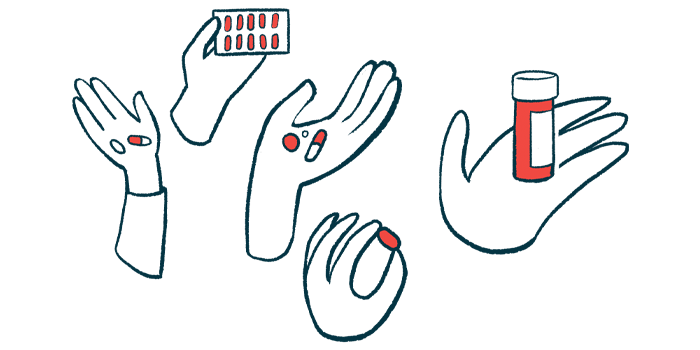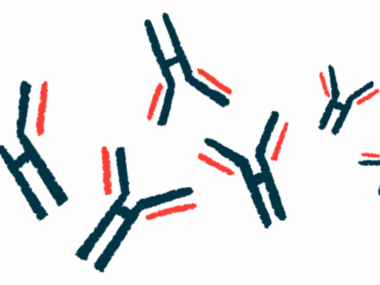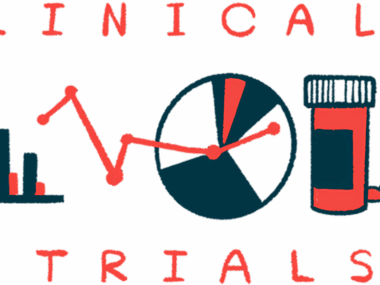Vyvgart, steroid therapy used as treatment for myasthenic crisis
Treatment was given to woman, 70, in the absence of standard care
Written by |

Combining Vyvgart (efgartigimod) with steroid therapy resolved a myasthenic crisis, a potentially life-threatening complication of myasthenia gravis (MG) marked by severe breathing problems, in a 70-year-old Japanese woman with generalized MG (gMG), a case study shows.
The combined therapy successfully treated the myasthenic crisis in the absence of plasmapheresis or intravenous immunoglobulin (IVIg), two mainstay treatments used to control MG symptoms in emergency situations.
“To the best of our knowledge, this is the first case of gMG to show the efficacy of [Vyvgart] during the acute phase of a myasthenic crisis without using IVIg or [plasmapheresis],” the researchers wrote.
The study, “Efgartigimod combined with steroids as a fast-acting therapy for myasthenic crisis: a case report,” was published in BMC Neurology.
MG is an autoimmune disease wherein the immune system targets and attacks proteins required for nerve-muscle communication, causing muscle weakness and fatigue. For most patients, MG is caused by self-reactive antibodies that target acetylcholine receptors (AChRs) on muscle cells, interfering with normal muscle contraction.
When muscle weakness affects muscles involved in breathing, patients risk having a myasthenic crisis that requires hospitalization. Along with breathing support, plasmapheresis or IVIg are often used in emergency settings to ease symptoms rapidly.
Vyvgart eases MG symptoms by lowering the levels of disease-causing autoantibodies in the bloodstream. In the U.S., it’s approved to treat adults with gMG who are positive for anti-AchR antibodies, while in Japan it’s approved for adults with gMG who don’t sufficiently respond to steroids or non-steroidal immunosuppressive therapies, regardless of their antibody status.
Phase 3 trials that established Vyvgart’s efficacy at easing gMG symptoms excluded patients who’d had a myasthenic crisis, making it unclear if Vyvgart might be an effective for the complication.
Treating a myasthenic crisis with Vyvgart, steroids
Here, clinicians from Japan write about a 70-year-old woman with gMG who was successfully treated with steroids and Vyvgart during a myasthenic crisis.
The woman, who was positive for anti-AChR antibodies, had begun to refuse to continue taking oral corticosteroids and tacrolimus, which is sold as Prograf and others, and developed eyelid droopiness, difficulty swallowing, and shortness of breath. She then had to be intubated, despite being given higher doses of acetylcholinesterase inhibitors and oral steroids.
Clinicians could not treat the woman myasthenic crisis with standard IVIg or plasmapheresis due to a shortage of the therapy or the lack of specialists to perform the procedures. As a result, they treated her with a cycle of intravenous, or into-the-vein, Vyvgart (four weekly doses of 500 mg/day) and repeated cycles of intravenous methylprednisolone pulse therapy.
After 15 days of treatment, the woman no longer needed intubation and could breathe on her own. She recovered and could walk without fatigue or shortness of breath. Circulating levels of anti-AChR antibodies also dropped during treatment, decreasing from 70 to 7.7 nanomoles per liter after 25 days of treatment.
The woman underwent three more cycles with Vyvgart when her fatigue began to worsen and she had a slight elevation in anti-AChR antibodies. During these additional cycles, she was able to taper her dose of oral corticosteroids.
Nearly 500 days after receiving treatment for her myasthenic crisis, the woman was in a minimal manifestation state, meaning she still had some muscle weakness, but no symptoms or functional limitations.
“Our case suggests that [Vyvgart] can be an alternative drug for achieving minimal manifestation status in patients with myasthenic crisis,” the researchers wrote. “Considering its strong efficacy and safety, [Vyvgart] could be expanded to use as bridging therapy in the acute and chronic phases of gMG.”







Leave a comment
Fill in the required fields to post. Your email address will not be published.